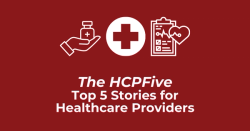
OR WAIT null SECS
Sibeprenlimab’s Potential in IgA Nephropathy, with John Kraus, MD, PhD
Kraus explains current unmet needs in IgA nephropathy and what sibeprenlimab may offer based on the phase 3 VISIONARY study.
Historically, the management of IgA nephropathy (IgAN) has been complicated by a lack of US Food and Drug Administration (FDA)-approved treatments. Until recently, nephrologists had limited options to offer their patients.
Now, with a growing understanding of the disease’s pathogenesis and progression, a wave of targeted treatments has transformed the landscape, ushering in a new era of disease-specific care. With the recent the filing of a Biologics License Application (BLA), sibeprenlimab, an investigational monoclonal antibody that selectively inhibits the activity of A PRoliferation-Inducing Ligand (APRIL), may offer another therapeutic option in the expanding IgAN treatment armamentarium.
Announced on March 31, 2025, the BLA submission was supported by results from the phase 2 ENVISION and phase 3 VISIONARY clinical trials. VISIONARY met its primary endpoint at the prespecified interim analysis, demonstrating treatment with sibeprenlimab led to a statistically significant and clinically meaningful reduction in 24-hour urine protein-to-creatine ratio compared with placebo after 9 months of treatment.
For additional insight into unmet needs in the IgAN treatment landscape and what sibeprenlimab may offer, the editorial team of HCPLive Nephrology spoke with John Kraus, MD, PhD, executive vice president and chief medical officer of Otsuka Pharmaceutical Development & Commercialization, Inc, in the following Q&A:
HCPLive Nephrology: Can you describe the unmet need for effective, targeted therapies with different mechanisms of action in IgAN?
Kraus: IgA nephropathy is characterized by the accumulation of galactose-deficient IgA1 (Gd-IgA1) complexes in the kidneys. It can lead to progressive loss of kidney function and, eventually, end-stage kidney disease (ESKD) over the lifetime of most patients under current optimized standard care, imposing a significant burden.
Despite supportive care, there is an unmet need for treatments that address the root cause of the condition, which is why continued research in the disease remains crucial to uncovering opportunities for advancement in our understanding and treatment of patients.
HCPLive Nephrology: Looking at sibeprenlimab in particular, can you explain its mechanism of action and why this is significant in IgAN?
Kraus: Sibeprenlimab is an investigational monoclonal antibody that selectively binds to and inhibits the activity of APRIL, a cytokine in the tumor necrosis factor family that is integral to the pathogenesis and progression of IgA nephropathy. It promotes the survival and class switching of B cells to produce immunoglobulin A (IgA), particularly the pathogenic Gd-IgA1 that forms immune complexes in the kidneys. By binding and inhibiting APRIL, sibeprenlimab may help reduce the amount of IgA and Gd-IgA1 levels, which may help slow kidney damage and progression toward ESKD.
With sibeprenlimab’s unique mechanism of action, we are optimistic about its potential to be an important treatment option for this progressive kidney disease. If approved, sibeprenlimab would be administered via injection every 4 weeks, which would allow patients the convenience and option of self-administration in the home setting.
HCPLive Nephrology: Can you tell me a bit about the VISIONARY study and how it explores the use of sibeprenlimab for the treatment of IgAN?
Kraus: The VISIONARY study is a multicenter, randomized, double-blind, placebo-controlled trial consisting of approximately 530 adult patients (the largest trial to date) with IgA nephropathy who were receiving standard-of-care therapy, defined as maximally tolerated ACE inhibitor or ARB +/- SGLT2 inhibitor. It is designed to evaluate the efficacy and safety of sibeprenlimab 400 mg administered subcutaneously every 4 weeks, compared to placebo. The primary efficacy endpoint is to evaluate the change in 24-hour uPCR at 9 months compared with baseline. The secondary endpoint is to evaluate the annualized slope of eGFR estimated over ~24 months.
Patients were enrolled across 5 continents, reflecting the diverse and high-risk population affected by this disease. Further, nearly all patients were on renin-angiotensin system blockade therapy (97.8%), with 45.1% also receiving sodium-glucose cotransporter-2 inhibitors, ensuring the study evaluated treatment efficacy against an optimized standard of care.
These patient baseline characteristics, presented recently at the National Kidney Foundation meeting in Boston on April 10, suggest that the phase 3 results, to be shared later this year, will be broadly applicable to real-world clinical practice. This represents a major step toward making this treatment available to patients.
Editors’ note: Kraus is the executive vice president and chief medical officer of Otsuka Pharmaceutical Development & Commercialization, Inc.


